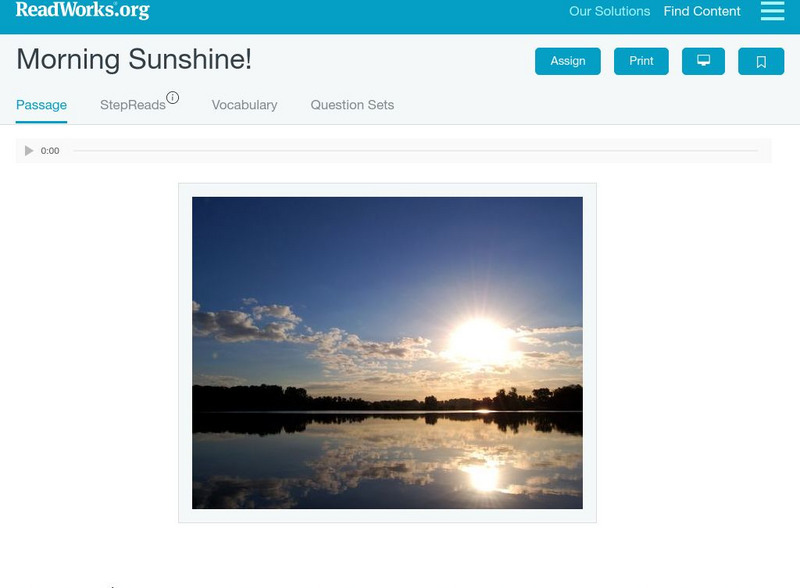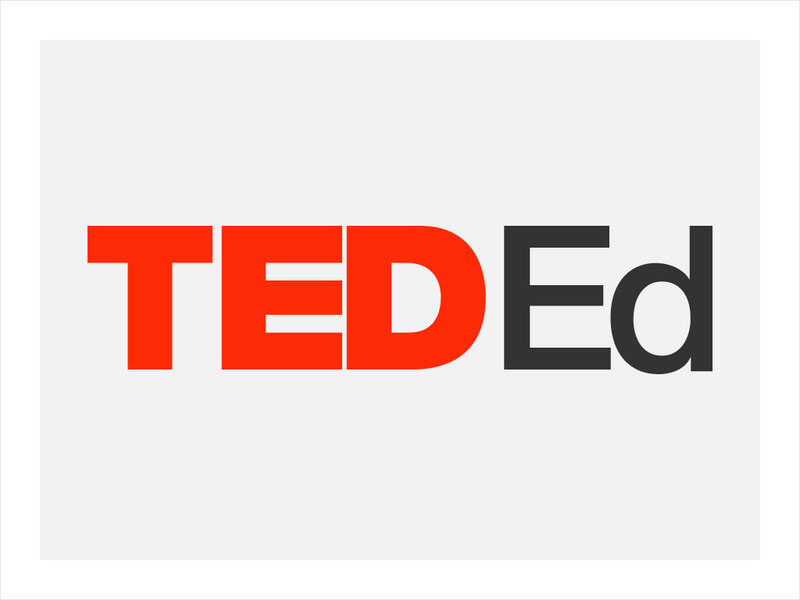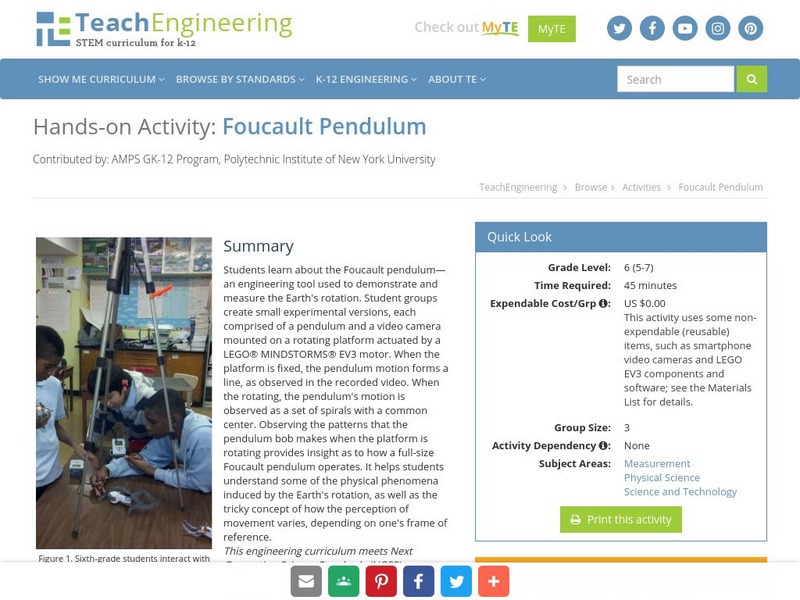TeachEngineering
Teach Engineering: Lunar Learning
Why does the Moon not always look the same to us? Sometimes it is a big, bright, circle, but, other times, it is only a tiny sliver, if we can see it at all. The different shapes and sizes of the slivers of the Moon are referred to as...
CK-12 Foundation
Ck 12: Earth Science: Venus
[Free Registration/Login may be required to access all resource tools.] Learn about the distinctive features of the planet Venus.
NASA
Nasa: Heliophysics: New Science of the Sun Solar System Connection
This site from NASA lists common and uncommon misconceptions about Sun-Earth Science. Site also provides links to activities and lesson plans as well as background reading.
Science Education Resource Center at Carleton College
Serc: Modeling Earth's Seasons by Rotation and Revolution
In this lesson plan, students will discuss, define, and demonstrate the Earth's rotation and revolution around the sun in a counterclockwise position. They will be able to predict seasons based on the amount of light that hits the Earth.
University of Chicago
University of Chicago: What's Your Slant? Sun and Shadows
This fun activity helps you to understand the movement of the sun by studying shadows.
E-learning for Kids
E Learning for Kids: Science: Rio De Janeiro: Day and Night: The Sun
Gabriella lives in Rio de Janeiro, Brazil. Help her learn more about the sun and identify the properties of the sun.
Libre Text
Libre Text: The Coriolis Force
The Coriolis force is a central element of the dynamics of ocean and atmosphere flows.
ClassFlow
Class Flow: Earth and Space Day and Night
[Free Registration/Login Required] This flipchart illustrates a view of the earth from space and how day and night happens.
Wikimedia
Wikipedia: The Black Hole
This site examines the black hole as an object in astrophysics. Delve into this comprehensive resource that covers this concept from its history, to qualitative physics, the reality of black holes, mathematical physics and more.
McREL International
Mc Rel: Earth's Axis [Pdf]
A worksheet regarding the path of the Sun around the Earth and the Earth's tilt on its axis.
National High Magnetic Field Laboratory
Magnet Academy: Foucault's Disk
Leon Foucault, a French physicist much better known for his pendulum demonstrating the rotation of the Earth, also created in 1855 a device that illustrated how eddy currents work. (Java tutorial)
Other
University of Windsor: Climates on a Rotating Earth
This site offers the text of a college lecture on the atmosphere, with information on the effect prevailing westerlies have on North America.
Texas Education Agency
Texas Gateway: Gyroscopic Effects: Vector Aspects of Angular Momentum
By the end of this section, you will be able to describe the right-hand rule to find the direction of angular velocity, momentum, and torque; explain the gyroscopic effect; and study how Earth acts like a gigantic gyroscope.
Geography 4 kids
Geography4 kids.com: Coriolis Spinning Around the Earth
An overview of the Coriolis Force, an effect on wind due to the rotation of Earth.
Read Works
Read Works: Morning Sunshine
[Free Registration/Login Required] Students read about how the tilt of the Earth on its axis affects sunrises and sunstes. A question sheet is available to help students build skills in reading comprehension.
Cornell University
Cornell University: Astronomy: Eratosthenes
Learn how Greek mathematician Eratosthenes used geometry to estimate the circumference of the Earth.
Science Struck
Science Struck: A Scientific Explanation to What Causes Day and Night
Explains how the rotation and the axial tilt of the Earth are responsible for the phenomenon of day and night. Provides information about the Sun, the solar system, and the Earth, and how the circumference of the Earth was first measured...
TED Talks
Ted: Ted Ed: What on Earth Is Spin?
Why is the spinning motion so special? Brian Jones details the dizzyingly wide array of ways that spinning affects our lives. [3:57]
CK-12 Foundation
Ck 12: Earth Science: Uranus
[Free Registration/Login may be required to access all resource tools.] Describes the features of Uranus.
CK-12 Foundation
Ck 12: Earth Science: Uranus
[Free Registration/Login may be required to access all resource tools.] Describes the features of Uranus.
Sophia Learning
Sophia: Earth and Sun
A slideshow exploring Earth's rotation and revolution around the sun. Learn that because of Earth's axis tilt we experience the seasons!
TeachEngineering
Teach Engineering: Foucault Pendulum
Students learn about the Foucault pendulum, an engineering tool used to demonstrate and measure the Earth's rotation. Student groups then create small experimental versions, each comprised of a pendulum and a video camera mounted on a...
American Geosciences Institute
American Geosciences Institute: Astronomy
Eight hands-on lessons module in which students explore the characteristics of planet Earth, its moons, the sun, the solar system, planets, and the difference between science fact and science fiction.
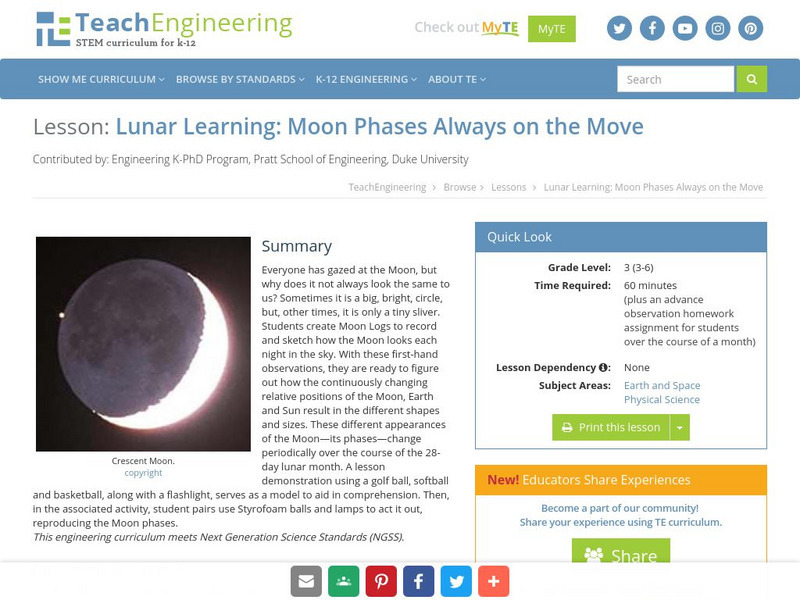
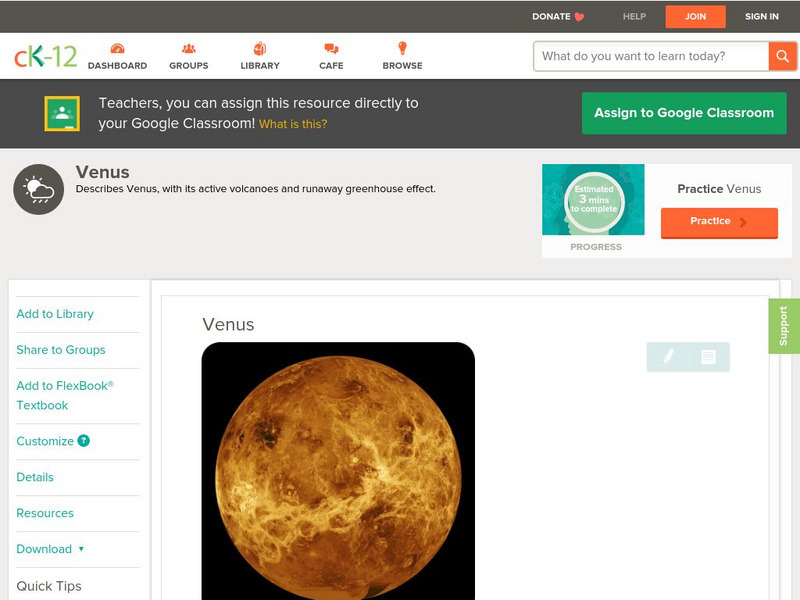
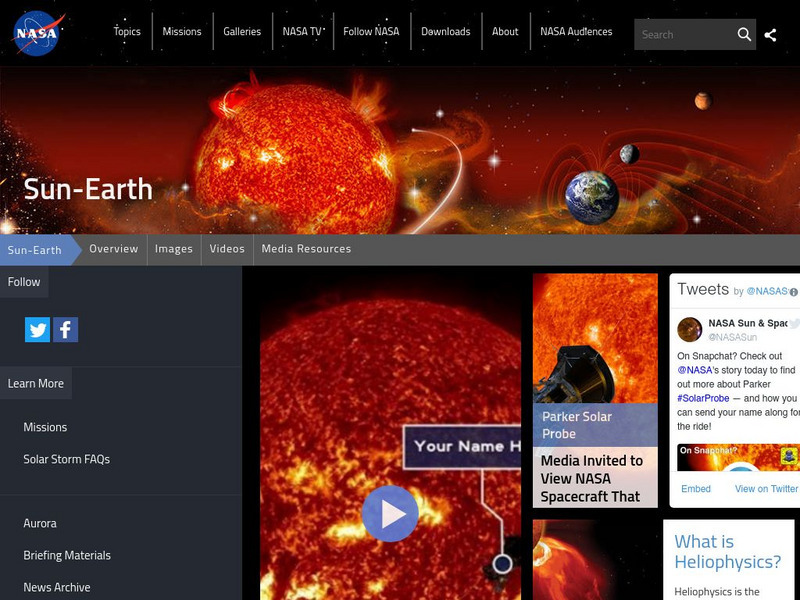




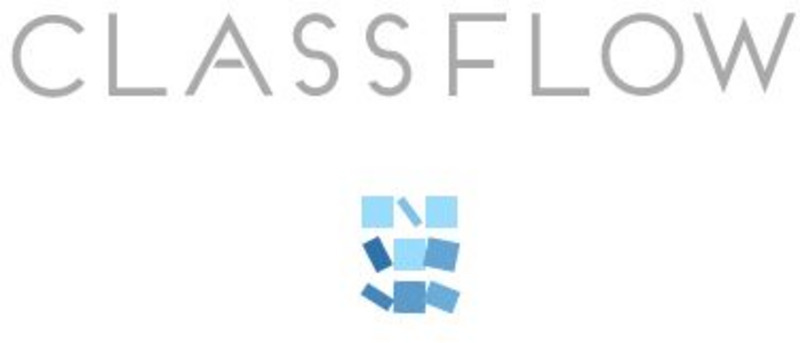

![Mc Rel: Earth's Axis [Pdf] Unknown Type Mc Rel: Earth's Axis [Pdf] Unknown Type](https://static.lp.lexp.cloud/images/attachment_defaults/resource/large/FPO-knovation.png)




